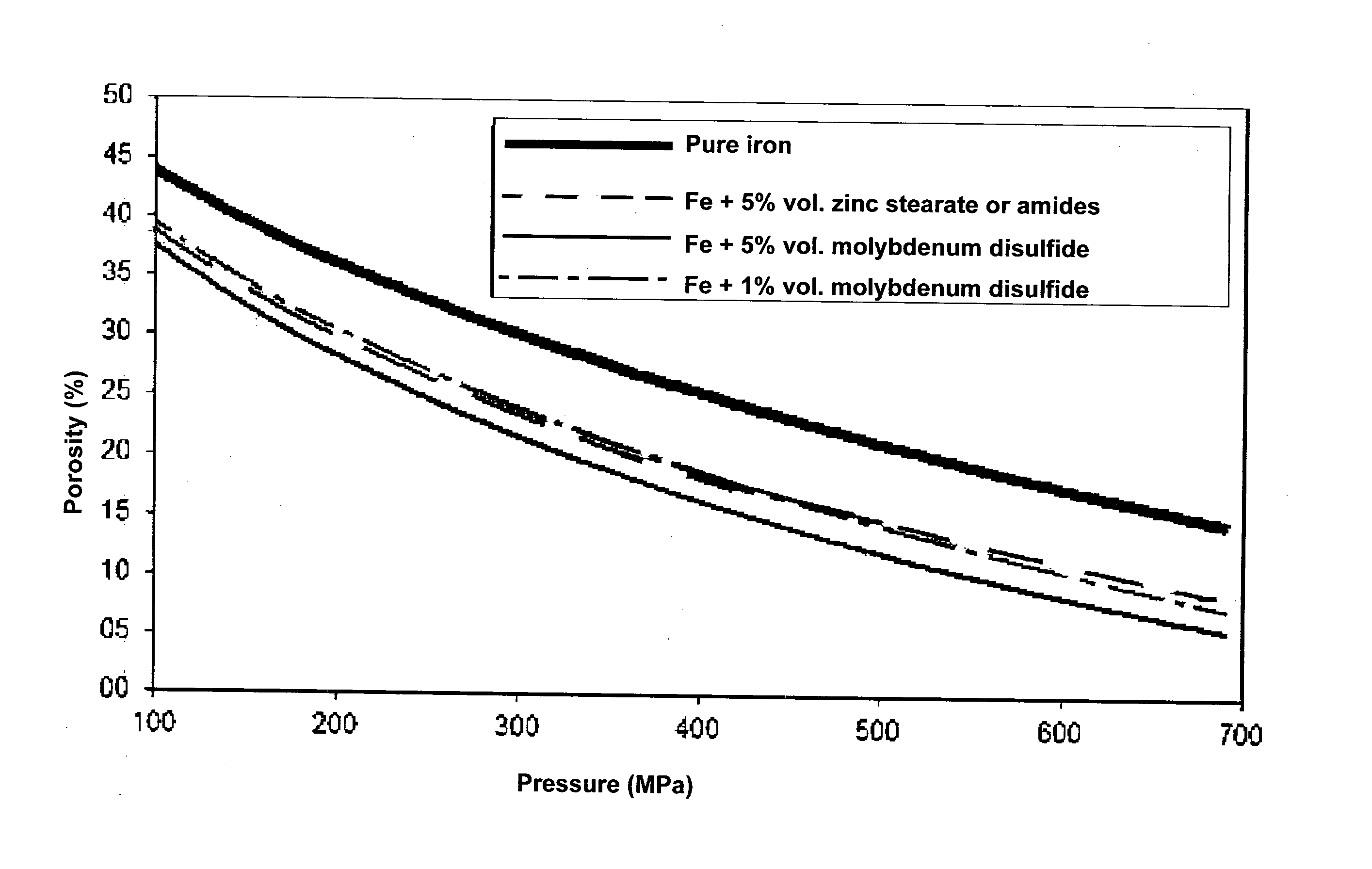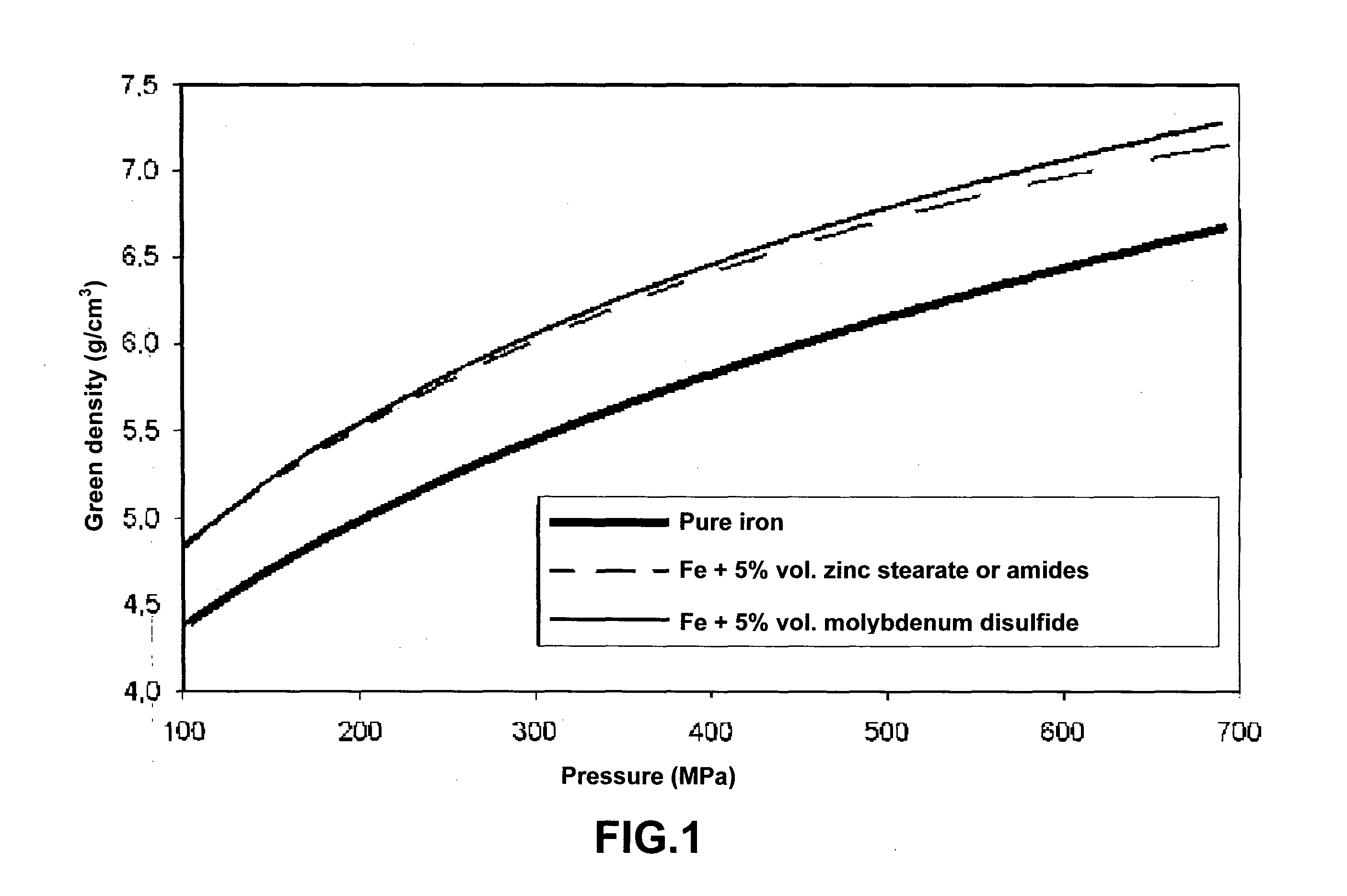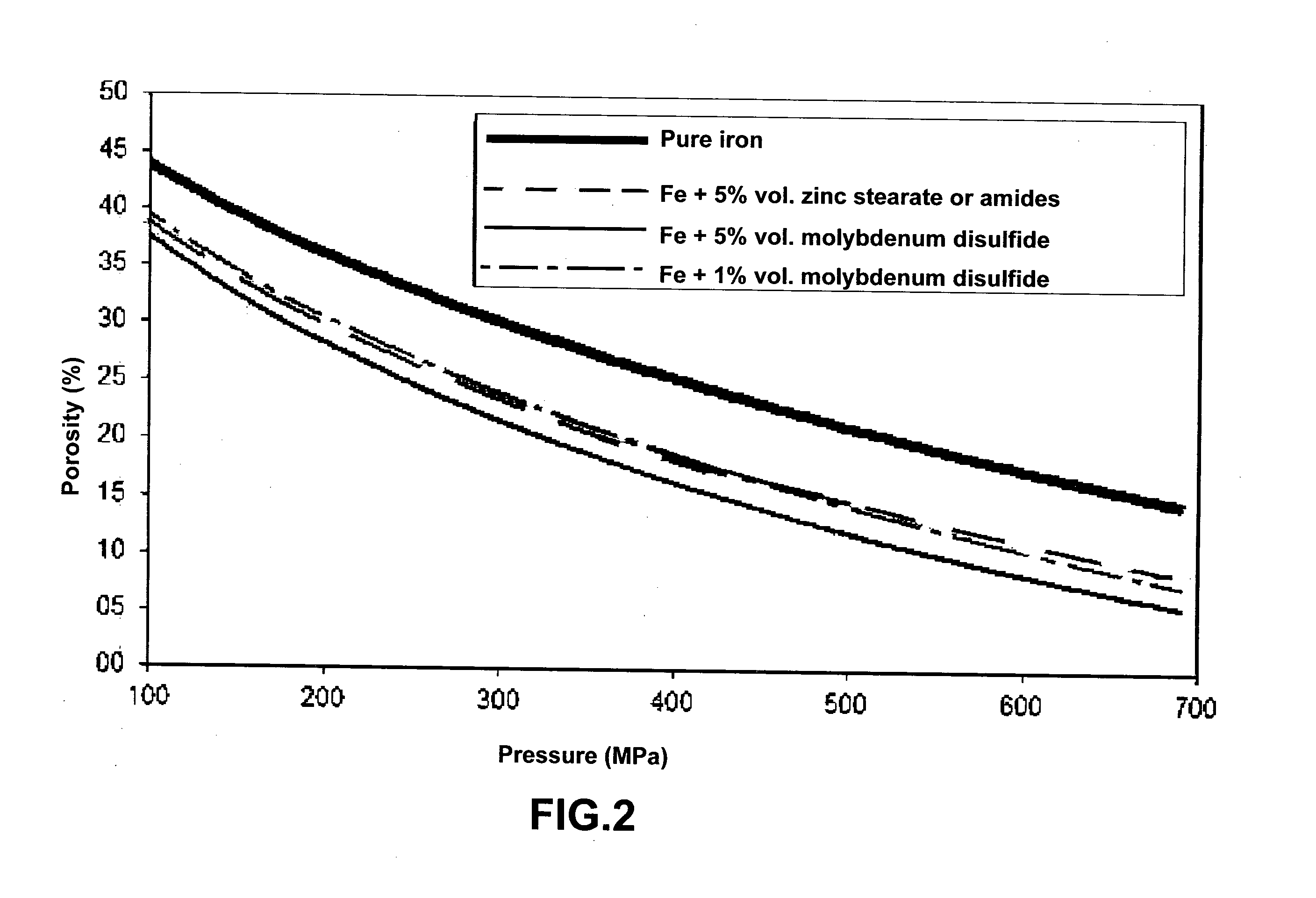Process for Obtaining Tight Components by Powder Metallurgy
- Summary
- Abstract
- Description
- Claims
- Application Information
AI Technical Summary
Benefits of technology
Problems solved by technology
Method used
Image
Examples
Embodiment Construction
[0040]The process object of the present invention includes the selection of powders, the known step of compacting the powder material into a mold, before said compacted material is subjected to the sintering step. In the present case, the process uses compaction of the uniaxial type which has been optimized to allow obtaining, by the end of sintering, a tight microstructure, presenting the required characteristics for the specific intended use, that is, for obtaining a tight component to be used to restrain the flow of liquid or gas fluids, sealing the passage thereof under different assembly conditions of the component.
[0041]The tight component to be obtained may be formed from a powder material, which forms the metal matrix of the compact, comprising a metallic powder selected from any of the elements defined by iron, nickel, copper and mixtures thereof, binary or ternary, as long as the sum of the contents of these elements in the total mixture is greater than 55% in mass of the ...
PUM
| Property | Measurement | Unit |
|---|---|---|
| Temperature | aaaaa | aaaaa |
| Fraction | aaaaa | aaaaa |
| Fraction | aaaaa | aaaaa |
Abstract
Description
Claims
Application Information
 Login to View More
Login to View More - R&D
- Intellectual Property
- Life Sciences
- Materials
- Tech Scout
- Unparalleled Data Quality
- Higher Quality Content
- 60% Fewer Hallucinations
Browse by: Latest US Patents, China's latest patents, Technical Efficacy Thesaurus, Application Domain, Technology Topic, Popular Technical Reports.
© 2025 PatSnap. All rights reserved.Legal|Privacy policy|Modern Slavery Act Transparency Statement|Sitemap|About US| Contact US: help@patsnap.com



